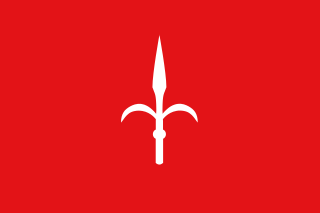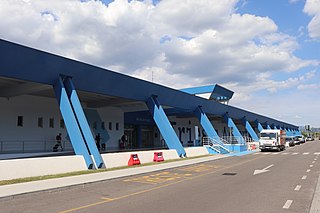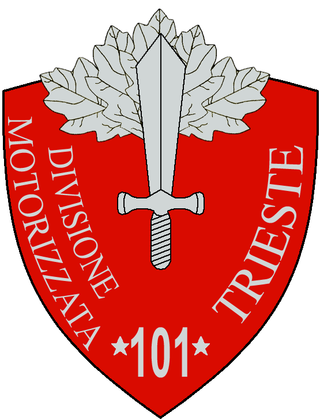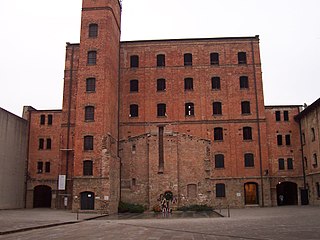
Trieste is a city and seaport in northeastern Italy. It is the capital and largest city of the autonomous region of Friuli-Venezia Giulia, as well as of the regional decentralization entity of Trieste.

The Free Territory of Trieste was an independent territory in Southern Europe between Northern Italy and Yugoslavia, facing the north part of the Adriatic Sea, under direct responsibility of the United Nations Security Council in the aftermath of World War II. For a period of seven years, it acted as a free city.

Friuli-Venezia Giulia is one of the 20 regions of Italy and one of five autonomous regions with special statute. The regional capital is Trieste on the Gulf of Trieste, a bay of the Adriatic Sea.
The University of Trieste is a public research university in Trieste in the Friuli-Venezia Giulia region in northeast Italy. The university consists of 10 departments, has a wide and almost complete range of university courses and has about 15,000 students and 1,000 professors. It was founded in 1924.

The province of Trieste is a province in the autonomous Friuli-Venezia Giulia region of Italy. Its capital was the city of Trieste. It had an area of 212 square kilometres (82 sq mi) and it had a total population of 234,668. It had a coastal length of 48.1 kilometres (29.9 mi). Abolished in 2017, it was reestablished in 2019 as the regional decentralization entity of Trieste, and was reactivated on 1 July 2020.

The Julian March, also called Julian Venetia, is an area of southern Central Europe which is currently divided among Croatia, Italy, and Slovenia. The term was coined in 1863 by the Italian linguist Graziadio Isaia Ascoli, a native of the area, to demonstrate that the Austrian Littoral, Veneto, Friuli, and Trentino shared a common Italian linguistic identity. Ascoli emphasized the Augustan partition of Roman Italy at the beginning of the Empire, when Venetia et Histria was Regio X.

Trieste Airport is an international airport located 0.3 NM west of Ronchi dei Legionari, near Trieste in Friuli-Venezia Giulia, north-eastern Italy. The airport has a catchment area of approximately 4 million people, stretching beyond Friuli-Venezia Giulia into neighboring Slovenia, Austria and Croatia.

The Austrian Littoral was a crown land (Kronland) of the Austrian Empire, established in 1849. It consisted of three regions: the Margraviate of Istria in the south, Gorizia and Gradisca in the north, and the Imperial Free City of Trieste in the middle. The region has been contested frequently, with parts of it controlled at various times by the Republic of Venice, Austria-Hungary, Italy, and Yugoslavia among others.

Roberto Dipiazza is an Italian entrepreneur and politician. A member of the centre-right party Forza Italia, he has been mayor of Muggia between 1996 and 2001 and mayor of Trieste between 2001 and 2011 and again since 2016.

Pallacanestro Trieste 2004 is an Italian professional basketball club based in Trieste. They played in the Lega Basket Serie A (LBA) for five seasons ; after winning playoffs of Serie A2 in 2023–24 season they are going to join again Lega Basket Serie A in the 2024–25 season. The PalaTrieste serves as the club's home arena.

101st Motorized Division "Trieste" was a motorized infantry division of the Royal Italian Army during World War II. The Trieste was formed in 1939 and named for the city of Trieste. The division and its infantry and artillery regiments were based in Piacenza, while the 9th Bersaglieri Regiment was based until 1940 in Treviso and then moved to Cremona to be closer to the division. In September 1941 the Trieste was transferred to Libya for the Western Desert Campaign. The division was decimated in the Second Battle of El Alamein, but was rebuilt with the survivors of destroyed divisions. The Trieste then participated in the Tunisian Campaign until Axis forces in Tunisia surrendered to allied forces on 13 May 1943.

Risiera di San Sabba is a five-storey brick-built compound located in Trieste, northern Italy, that functioned during World War II as a Nazi concentration camp for the detention and killing of political prisoners, and a transit camp for Jews, most of whom were then deported to Auschwitz.

Vittoria Light also known as the Victory Lighthouse, is an active lighthouse in Trieste, Italy, serving the Gulf of Trieste. It is located on the Hill of Gretta, off the Strada del Friuli. At a height of 223 feet (68 m) it is one of the tallest lighthouses in the world.

Serbs in Italy, also referred to as Italian Serbs are a community numbering 29,679

Trieste Centrale railway station is the main station serving the city and municipality (comune) of Trieste, in the autonomous region of Friuli-Venezia Giulia, northeastern Italy.

Monfalcone railway station serves the town and comune of Monfalcone, in the autonomous region of Friuli-Venezia Giulia, northeastern Italy.

The Imperial Free City of Trieste and its Territory was a possession of the Habsburg monarchy in the Holy Roman Empire from the 14th century to 1806, a constituent part of the German Confederation and the Austrian Littoral from 1849 to 1920, and part of the Italian Julian March until 1922. In 1719 it was declared a free port by Emperor Charles VI; the construction of the Austrian Southern Railway (1841–57) turned it into a bustling seaport, through which much of the exports and imports of the Austrian Lands were channelled. The city administration and economy were dominated by the city's Italian population element; Italian was the language of administration and jurisdiction. In the later 19th and early 20th century, the city attracted the immigration of workers from the city's hinterlands, many of whom were speakers of Slovene.
Slovene minority in Italy, also known as Slovenes in Italy is the name given to Italian citizens who belong to the autochthonous Slovene ethnic and linguistic minority living in the Italian autonomous region of Friuli-Venezia Giulia. The vast majority of members of the Slovene ethnic minority live in the Provinces of Trieste, Gorizia, and Udine. Estimates of their number vary significantly; the official figures show 52,194 Slovenian speakers in Friuli-Venezia Giulia, as per the 1971 census, but Slovenian estimates speak of 83,000 to 100,000 people.

















